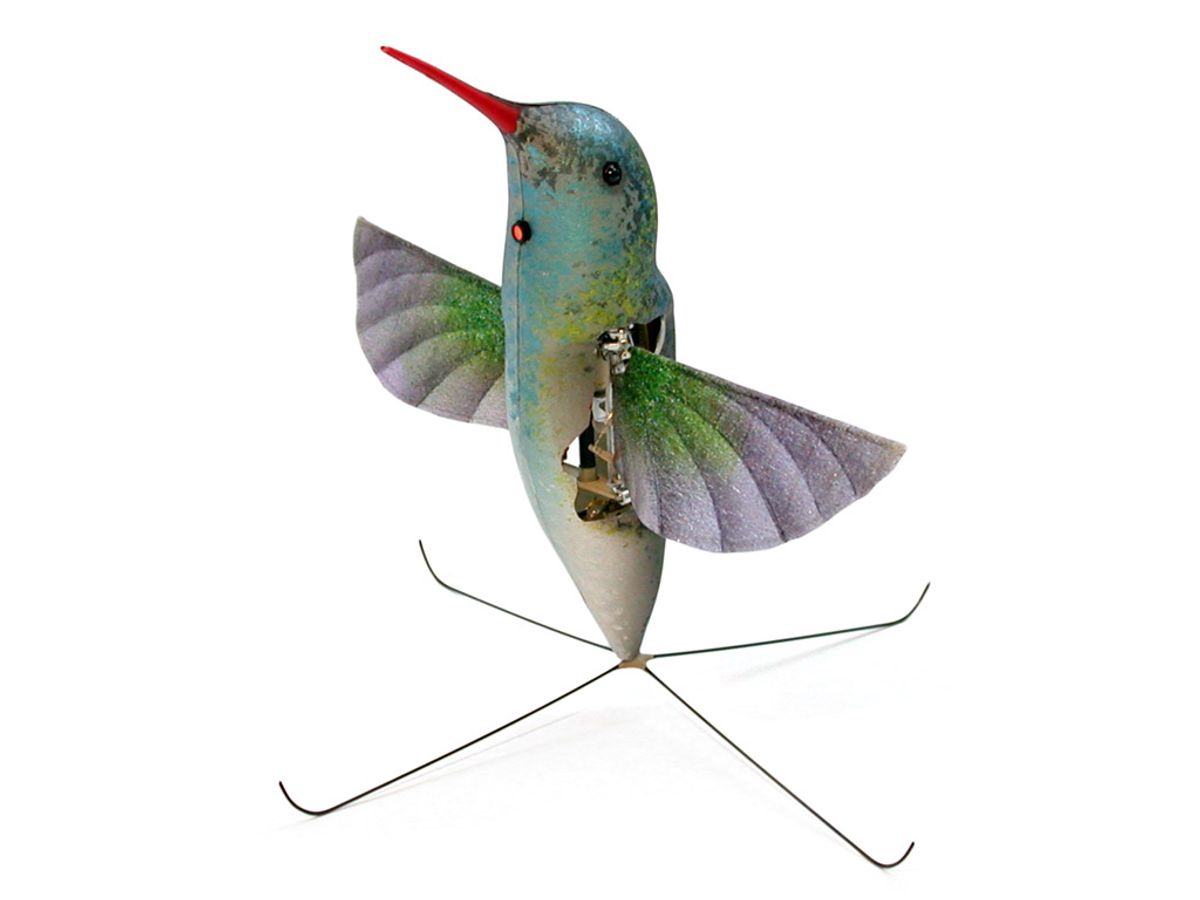Back in July of 2009, we got our first look at AeroVironment’s excessively hummingbirdish nano air vehicle (NAV) as it went through tethered and untethered tests. The more capable Phase II version that DARPA asked for is now complete, and is demonstrating controlled indoor and outdoor flight, endurance flights, and precision hovering:
The Nano Hummingbird may be slightly noisier than a real hummingbird, but it sure does look like one, and be honest: if you saw one of these things buzzing around, would you think it might be a surveillance robot, or would you just assume it was an obnoxiously loud bird?
The bot itself weighs in at 19 grams, with a 16 centimeter wingspan, and it can buzz around at upwards of 11 mph for over 10 minutes. Just like a real hummingbird, the NAV uses only its wings for propulsion and steering, and can move in any direction or rotate in place like a helicopter. It’s not yet clear how resilient the robot is when it comes to impacts (something that’s common in indoor environments where surveillance bots like this can be expected to be used), but in general, winged designs tend to be more capable and forgiving than something with a rotor.
The Nano Hummingbird isn’t just a stable platform, it’s quite nimble, too. Here it is doing a 360 degree loop:
Note that that wasn’t just a flip, it was an autonomous flip, implying that the dude standing there with the controls is more or less redundant.
So what’s the future for the NAV? Well, this is obviously just a prototype, but all of the functionality (including the payload and endurance) seems to be there. AeroVironment estimates that it would be about a decade before the Nano Hummingbird would be ready for reconnaissance deployment, but that strikes me as extremely conservative, especially considering the immediate usefulness of the platform. Besides, in a decade this thing will probably be refined and miniaturized to about the size of a flea, and we’ll have them crawling over us all the time, everywhere.
On a side note, the Nano Hummingbird was chosen by DARPA to move to Phase II of development over Lockheed Martin’s equally cool SAMARAI, which they’re still working on as of October of last year. So pretty soon, it’ll be birds, bugs, and trees that will all be spying on you. Yay robots!
[ AeroVironment ] VIA [ Physorg ]
Evan Ackerman is a senior editor at IEEE Spectrum. Since 2007, he has written over 6,000 articles on robotics and technology. He has a degree in Martian geology and is excellent at playing bagpipes.




